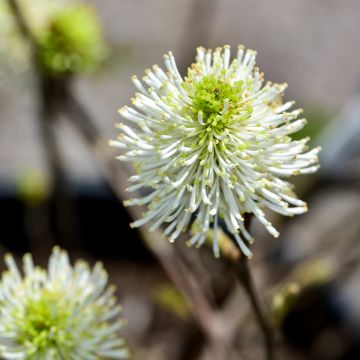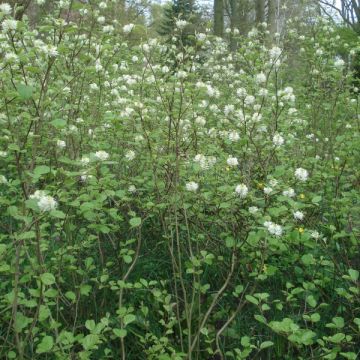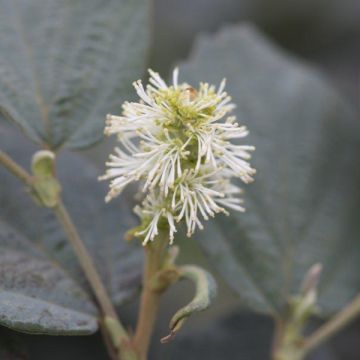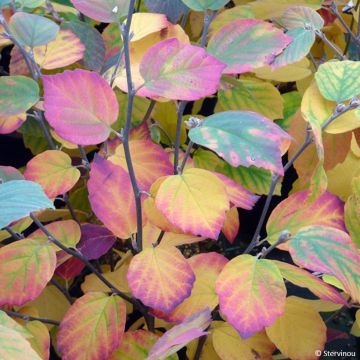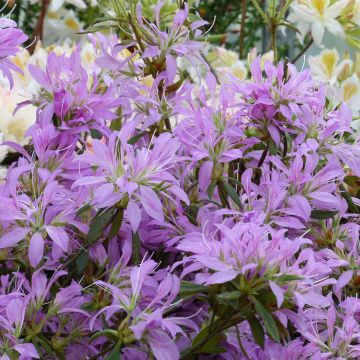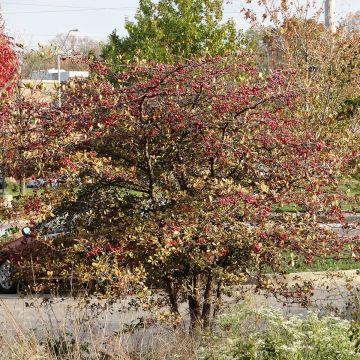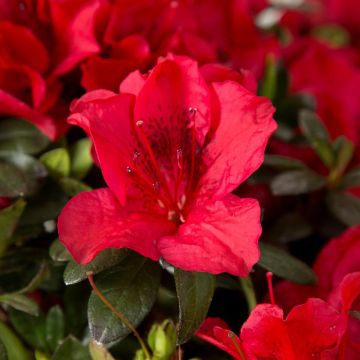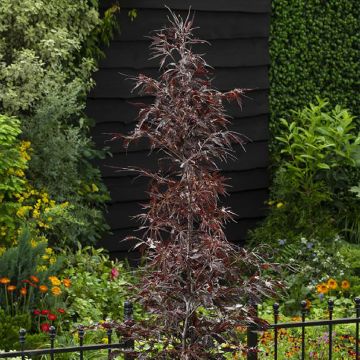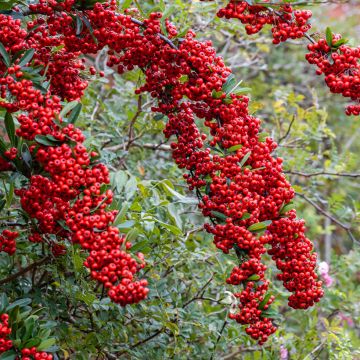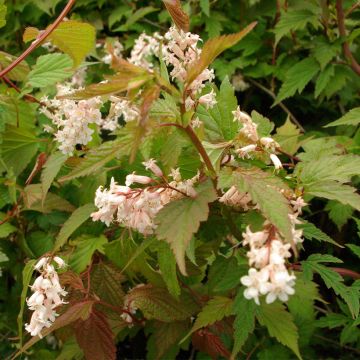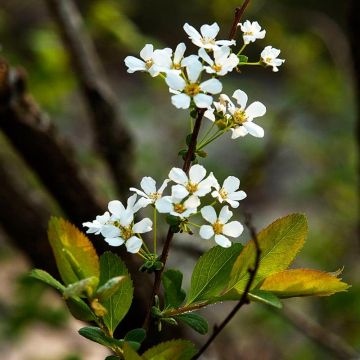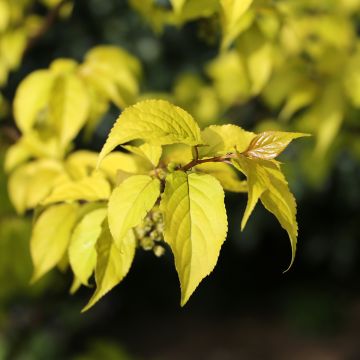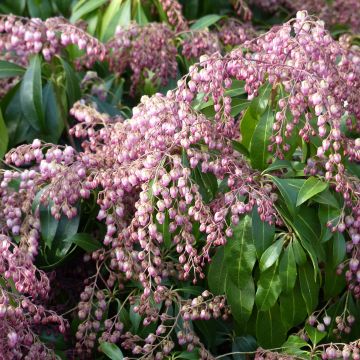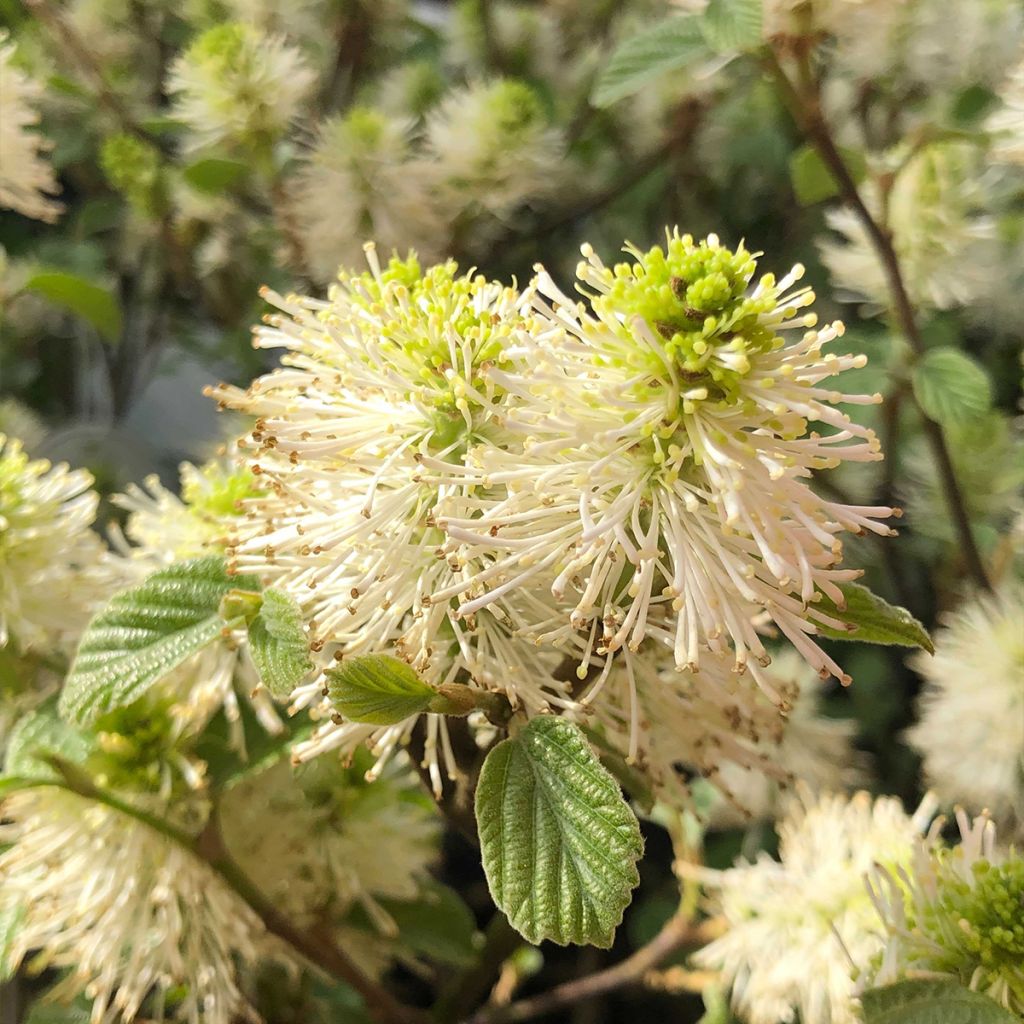

Fothergilla gardenii
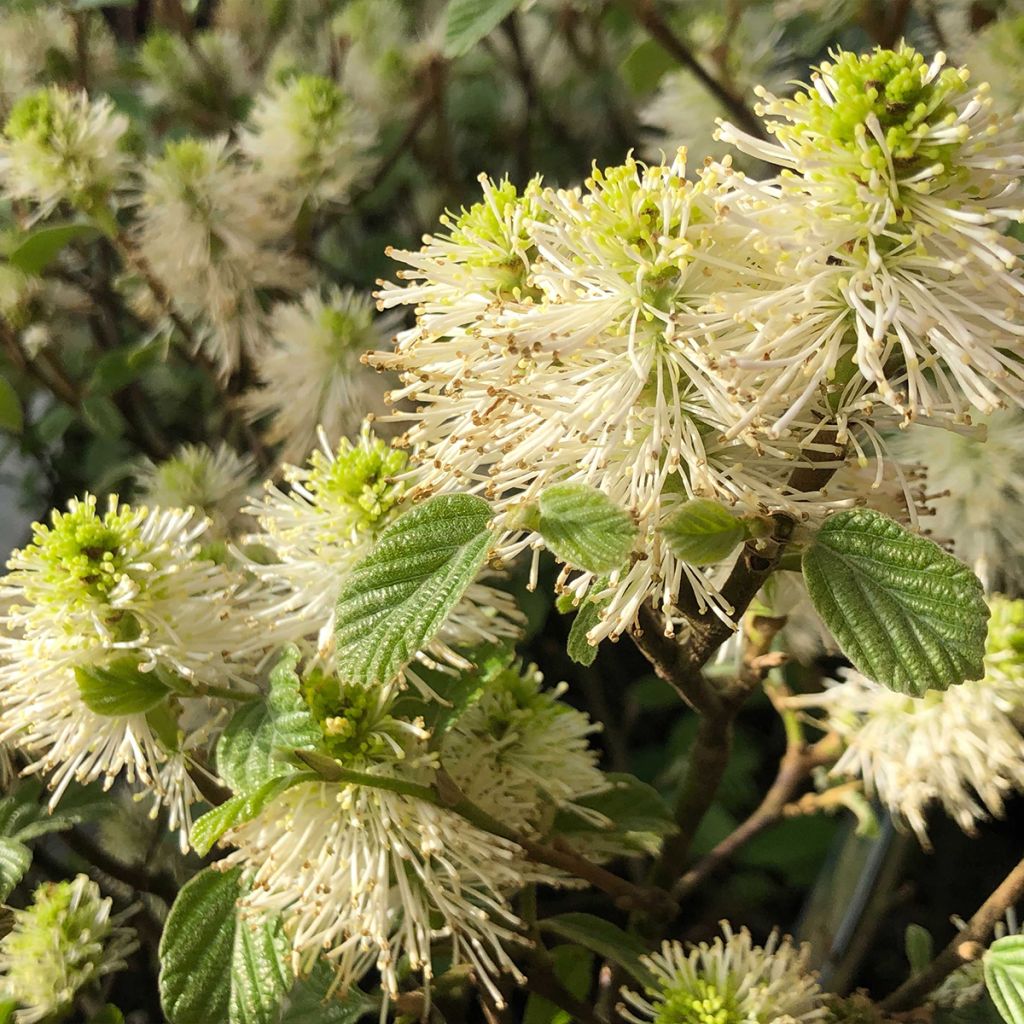

Fothergilla gardenii
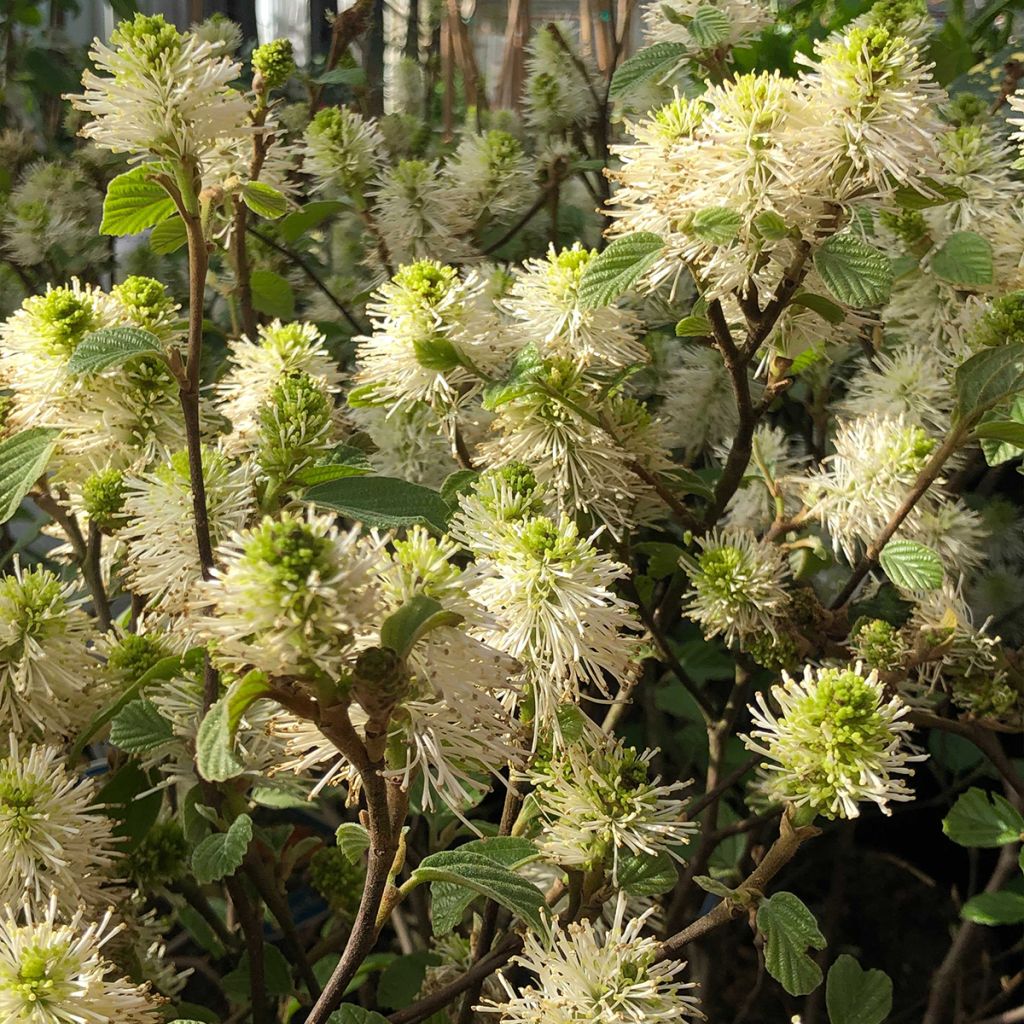

Fothergilla gardenii
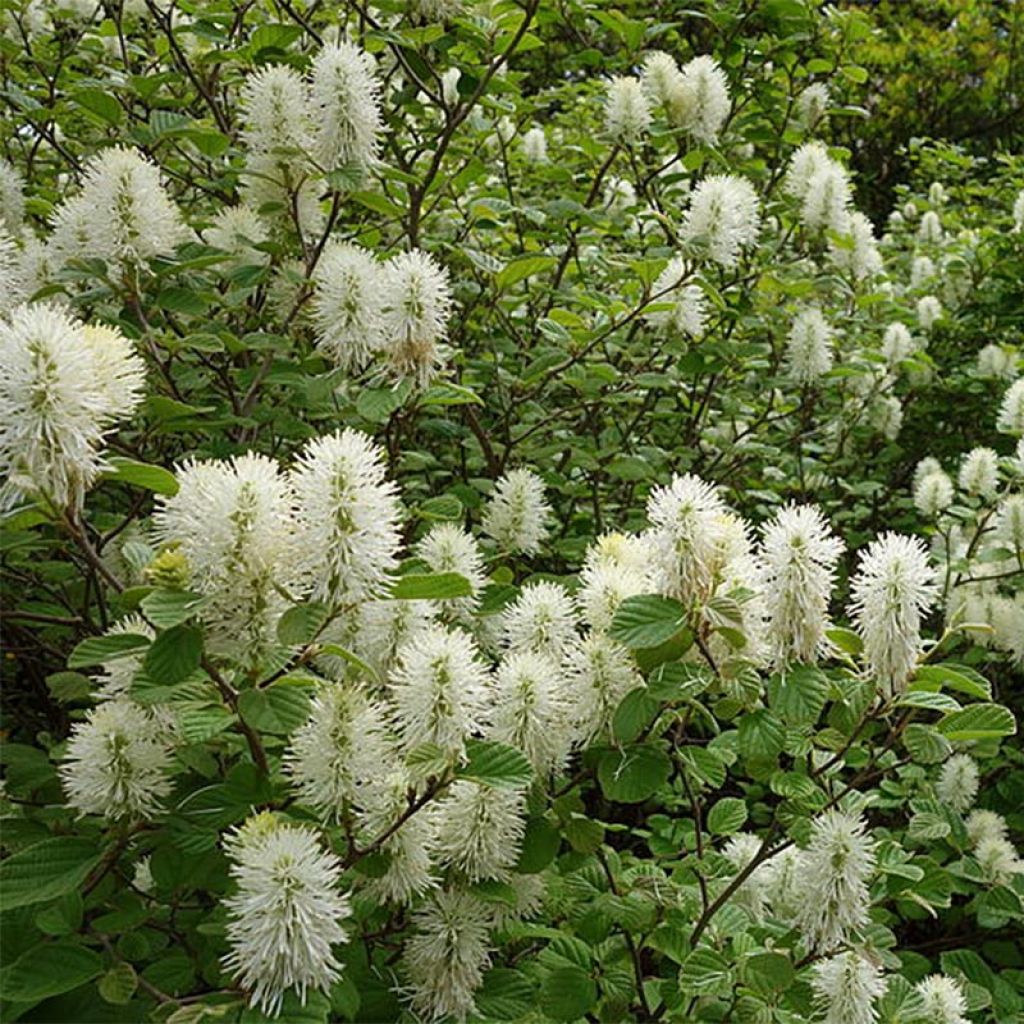

Fothergilla gardenii - Fothergille de Garden
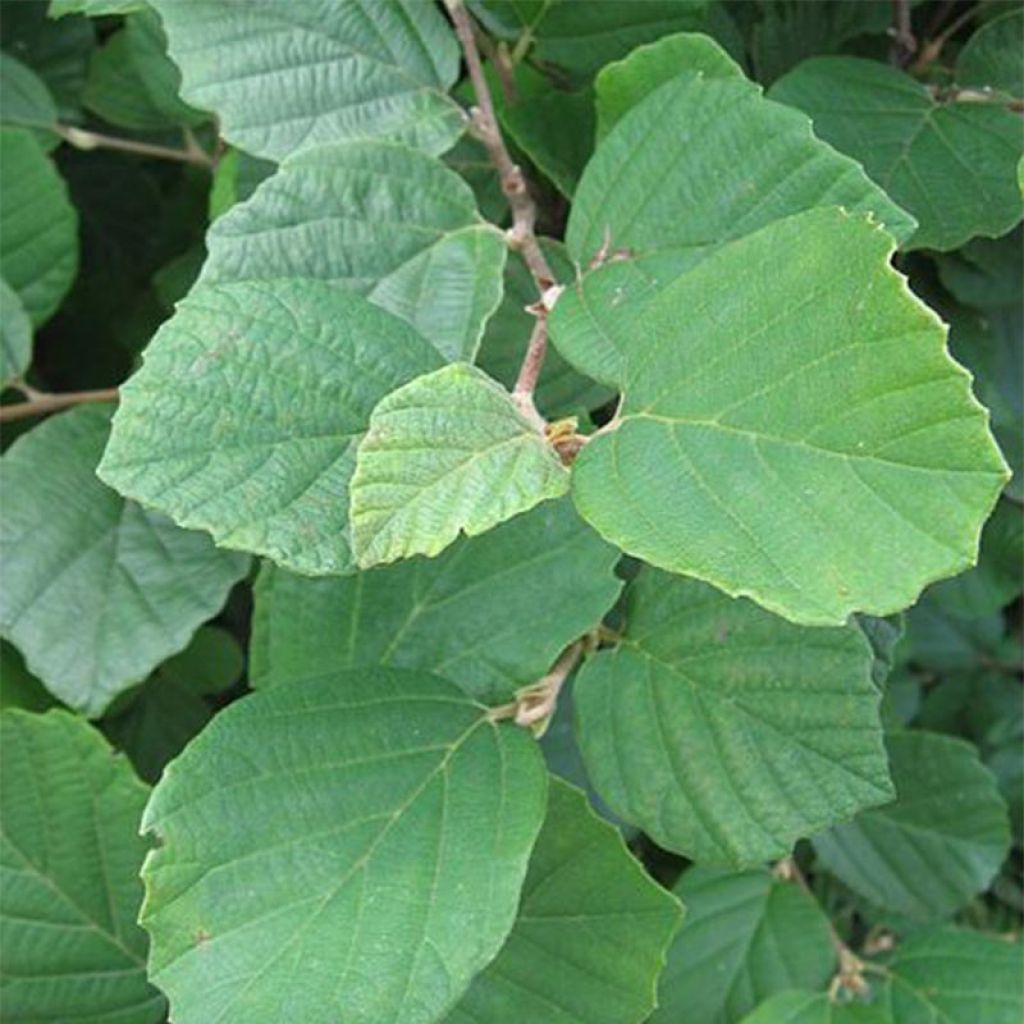

Fothergilla gardenii - Fothergille de Garden
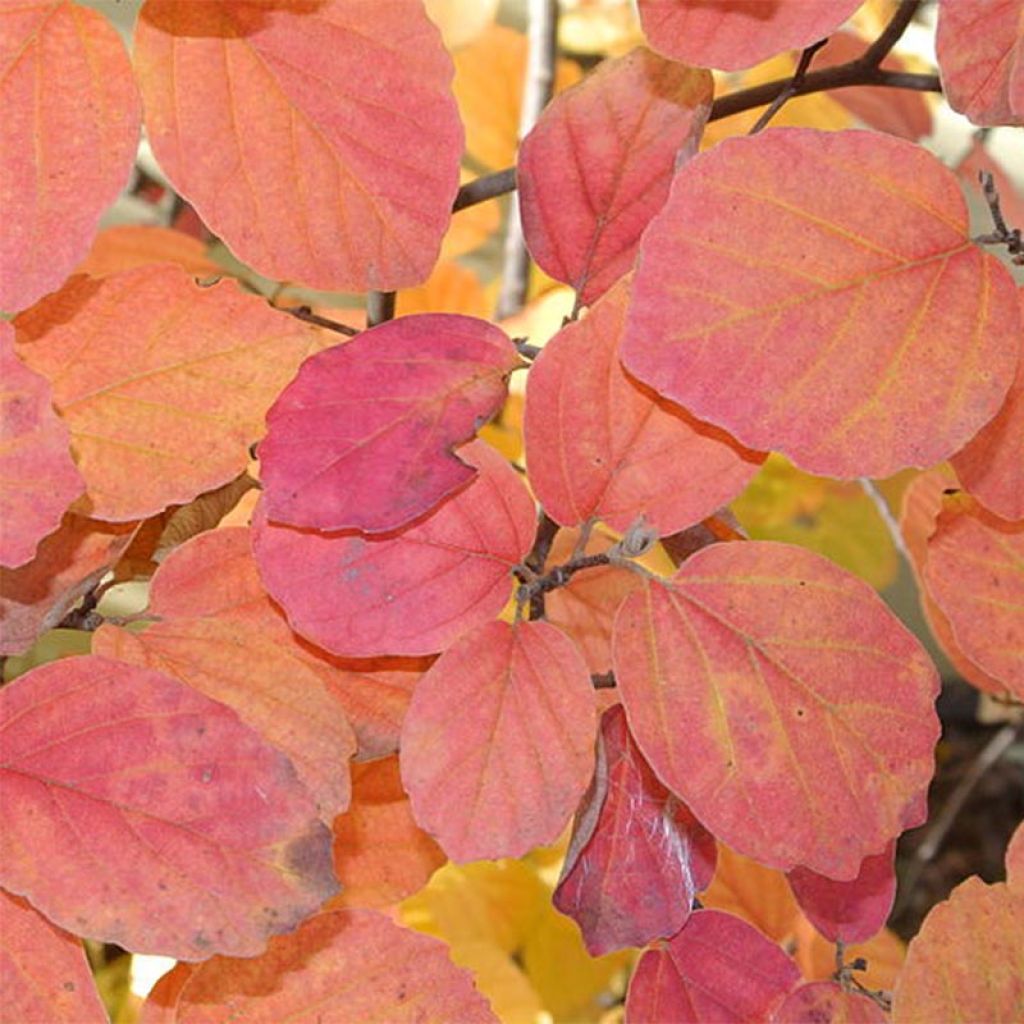

Fothergilla gardenii - Fothergille de Garden
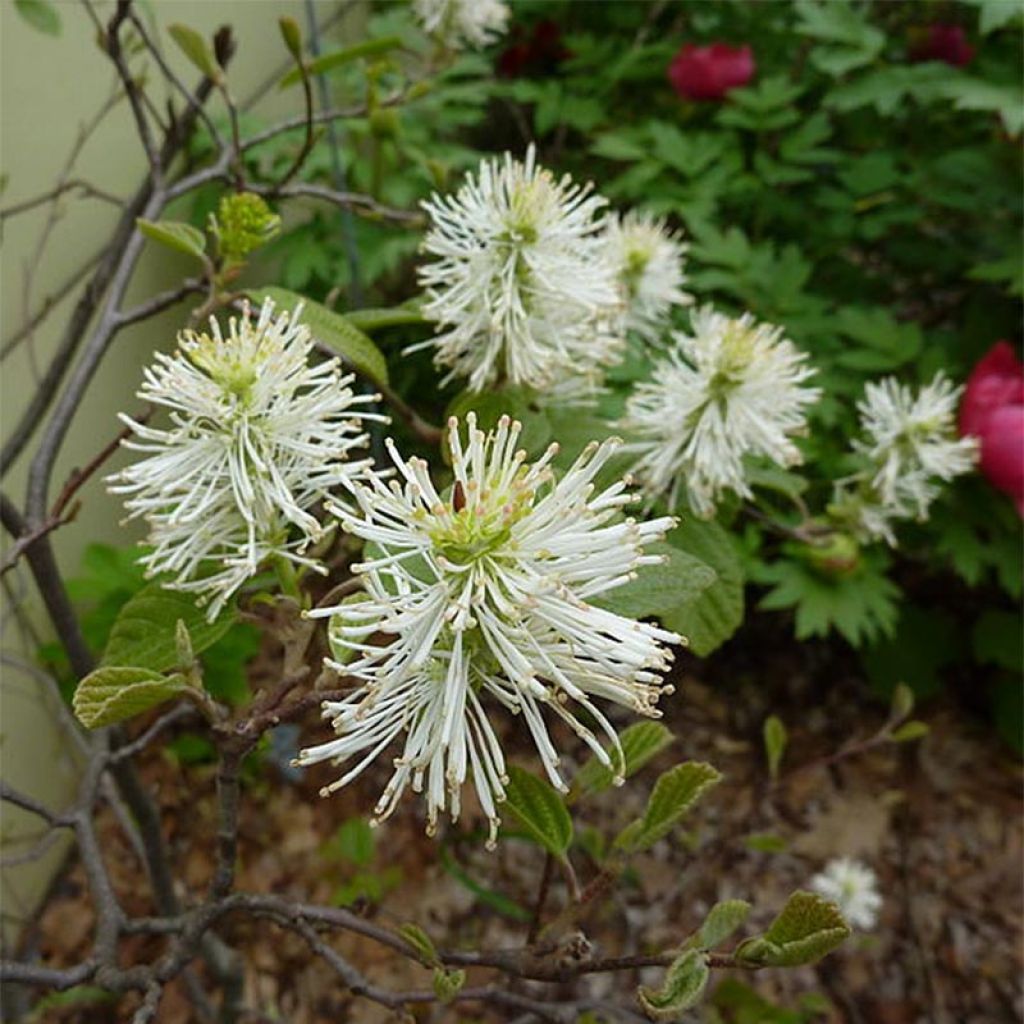

Fothergilla gardenii - Fothergille de Garden
Fothergilla gardenii
Fothergilla gardenii
Dwarf Fothergilla, American Witch Alder
Plant received in good quality, well balanced.
jy, 11/03/2024
Why not try an alternative variety in stock?
View all →This plant carries a 24 months recovery warranty
More information
We guarantee the quality of our plants for a full growing cycle, and will replace at our expense any plant that fails to recover under normal climatic and planting conditions.
From €5.90 for pickup delivery and €6.90 for home delivery
Express home delivery from €8.90.

Does this plant fit my garden?
Set up your Plantfit profile →
Description
Fothergilla gardenii, sometimes nicknamed Dwarf Fothergilla, is a small, bushy shrub appreciated for its splendid autumn colours, in a mix of gold, fiery orange, copper and purple. In spring, curious white inflorescences in the shape of spikes appear with a honey fragrance that attracts bees. This charming and surprising Fothergilla gardenii does not tolerate limestone in the soil, but is very drought-tolerant once established. It therefore has its place in a small garden or in a heathland shrub border.
Fothergilla gardenii is a cousin of witch hazels native to the Southeastern United States. Its natural habitat consists of marshy plains, wet savannahs and boggy areas. While it is often found in flooded areas, it can endure periods of drought, which links to the seasonal drying out of its natural habitat. Of modest stature, it has a bushy but flexible habit, rarely exceeding 90 cm (35.4 in) in all directions. It has slow growth. Its deciduous foliage resembles that of hazelnut. It is composed of leaves measuring 3 to 8 cm (1.2 to 3.1 in) long by 3 to 4 cm (1.2 to 1.6 in) wide, diamond-shaped, pubescent, wavy with prominent veins. These are initially light green, darkening in summer. In autumn, they change colour to yellow and coppery orange, with streaks of purple red, filling the garden with splendid hues. Its flowers, in conical spikes measuring 3.5 cm (1.4 in) in length, are white and fragrant, and provide as much interest as the plant's colourful foliage. They are abundant on the grey, naked branches during the months of April-May. Each inflorescence is composed of flowers, made up of numerous recurved stamens enclosed in a green to cream-coloured calyx. The colour varies from white to cream, with the tip of the 'spike' being yellow-green.
Fothergilla prefers light shade and sandy, limestone-poor, and light soils. A half-shaded position, under the cover of other lightly foliaged shrubs, will suit it perfectly. Plant it on the edge of woodland, under large trees, or in the back of a border in the company of Heucheras, Daphnes, Pieris, and Sarcococca. It will also be magnificent in a border mixed with evergreen shrubs such as an autumn-flowering camellia or a Chimonanthus praecox. Winter heathers and hellebores are effective at the base of this plant.
Report an error about the product description
Fothergilla gardenii in pictures
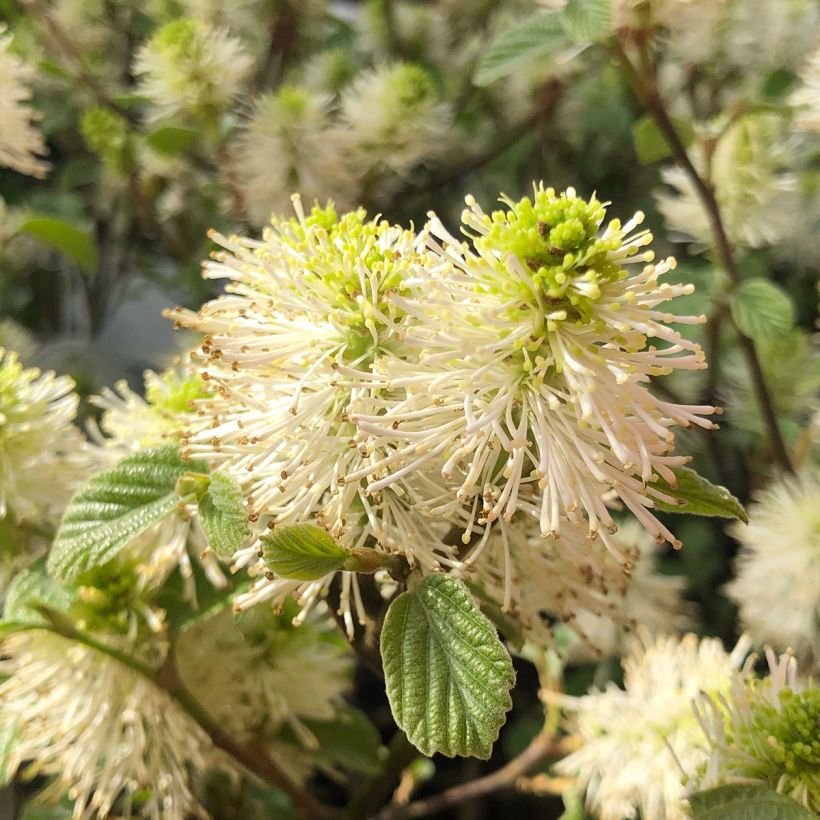

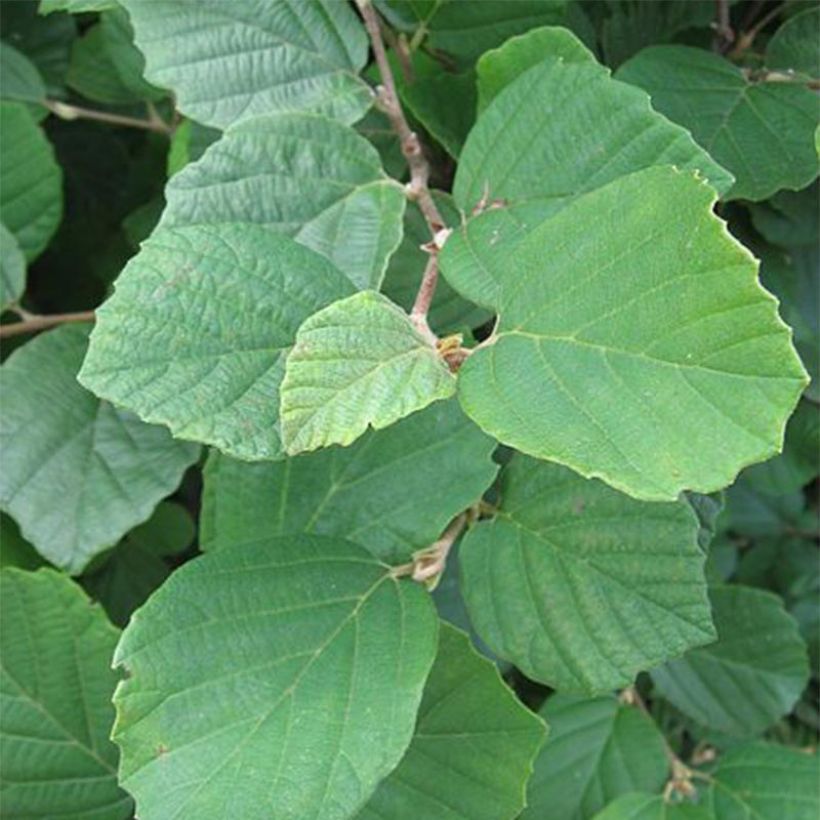



Plant habit
Flowering
Foliage
Botanical data
Fothergilla
gardenii
Hamamelidaceae
Dwarf Fothergilla, American Witch Alder
North America
Other Fothergilla
Planting and care
To fully enjoy the beauty of your Fothergilla gardenii, plant it near the house so that it stands out against a dark background of evergreen foliage. It is best to plant it in September-October so that it has time to establish itself before the cold weather sets in. A semi-shaded exposure is preferred over scorching sun. Being intolerant to limestone, it should be grown in ericaceous soil, or at least in non-limestone soil enriched with leaf compost and sand. Tip: Fothergilla plants dislike limestone soils, which is indicated by the summer yellowing of its leaves, followed by reduced flowering. Incorporate ericaceous soil during planting to help it to establish. The soil should remain moist during its establishment, even in summer. Mulching around the plant will help maintain freshness. However, once well established, this shrub requires no watering in summer. Fothergilla requires little maintenance and does not require fertilization. A blanket of dead leaves will suffice to maintain soil humus levels. This bush does not appreciate pruning.
Planting period
Intended location
Care
-
, onOrder confirmed
Reply from on Promesse de fleurs
Spring-flowering shrubs
Haven't found what you were looking for?
Hardiness is the lowest winter temperature a plant can endure without suffering serious damage or even dying. However, hardiness is affected by location (a sheltered area, such as a patio), protection (winter cover) and soil type (hardiness is improved by well-drained soil).

Photo Sharing Terms & Conditions
In order to encourage gardeners to interact and share their experiences, Promesse de fleurs offers various media enabling content to be uploaded onto its Site - in particular via the ‘Photo sharing’ module.
The User agrees to refrain from:
- Posting any content that is illegal, prejudicial, insulting, racist, inciteful to hatred, revisionist, contrary to public decency, that infringes on privacy or on the privacy rights of third parties, in particular the publicity rights of persons and goods, intellectual property rights, or the right to privacy.
- Submitting content on behalf of a third party;
- Impersonate the identity of a third party and/or publish any personal information about a third party;
In general, the User undertakes to refrain from any unethical behaviour.
All Content (in particular text, comments, files, images, photos, videos, creative works, etc.), which may be subject to property or intellectual property rights, image or other private rights, shall remain the property of the User, subject to the limited rights granted by the terms of the licence granted by Promesse de fleurs as stated below. Users are at liberty to publish or not to publish such Content on the Site, notably via the ‘Photo Sharing’ facility, and accept that this Content shall be made public and freely accessible, notably on the Internet.
Users further acknowledge, undertake to have ,and guarantee that they hold all necessary rights and permissions to publish such material on the Site, in particular with regard to the legislation in force pertaining to any privacy, property, intellectual property, image, or contractual rights, or rights of any other nature. By publishing such Content on the Site, Users acknowledge accepting full liability as publishers of the Content within the meaning of the law, and grant Promesse de fleurs, free of charge, an inclusive, worldwide licence for the said Content for the entire duration of its publication, including all reproduction, representation, up/downloading, displaying, performing, transmission, and storage rights.
Users also grant permission for their name to be linked to the Content and accept that this link may not always be made available.
By engaging in posting material, Users consent to their Content becoming automatically accessible on the Internet, in particular on other sites and/or blogs and/or web pages of the Promesse de fleurs site, including in particular social pages and the Promesse de fleurs catalogue.
Users may secure the removal of entrusted content free of charge by issuing a simple request via our contact form.
The flowering period indicated on our website applies to countries and regions located in USDA zone 8 (France, the United Kingdom, Ireland, the Netherlands, etc.)
It will vary according to where you live:
- In zones 9 to 10 (Italy, Spain, Greece, etc.), flowering will occur about 2 to 4 weeks earlier.
- In zones 6 to 7 (Germany, Poland, Slovenia, and lower mountainous regions), flowering will be delayed by 2 to 3 weeks.
- In zone 5 (Central Europe, Scandinavia), blooming will be delayed by 3 to 5 weeks.
In temperate climates, pruning of spring-flowering shrubs (forsythia, spireas, etc.) should be done just after flowering.
Pruning of summer-flowering shrubs (Indian Lilac, Perovskia, etc.) can be done in winter or spring.
In cold regions as well as with frost-sensitive plants, avoid pruning too early when severe frosts may still occur.
The planting period indicated on our website applies to countries and regions located in USDA zone 8 (France, United Kingdom, Ireland, Netherlands).
It will vary according to where you live:
- In Mediterranean zones (Marseille, Madrid, Milan, etc.), autumn and winter are the best planting periods.
- In continental zones (Strasbourg, Munich, Vienna, etc.), delay planting by 2 to 3 weeks in spring and bring it forward by 2 to 4 weeks in autumn.
- In mountainous regions (the Alps, Pyrenees, Carpathians, etc.), it is best to plant in late spring (May-June) or late summer (August-September).
The harvesting period indicated on our website applies to countries and regions in USDA zone 8 (France, England, Ireland, the Netherlands).
In colder areas (Scandinavia, Poland, Austria...) fruit and vegetable harvests are likely to be delayed by 3-4 weeks.
In warmer areas (Italy, Spain, Greece, etc.), harvesting will probably take place earlier, depending on weather conditions.
The sowing periods indicated on our website apply to countries and regions within USDA Zone 8 (France, UK, Ireland, Netherlands).
In colder areas (Scandinavia, Poland, Austria...), delay any outdoor sowing by 3-4 weeks, or sow under glass.
In warmer climes (Italy, Spain, Greece, etc.), bring outdoor sowing forward by a few weeks.

































